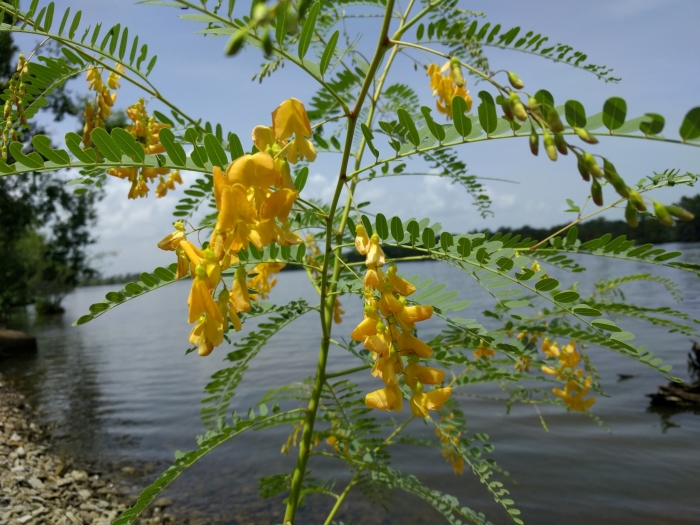Poisonbean
(Sesbania drummondii)
Poisonbean (Sesbania drummondii)
/
/

Irvin Louque
CC BY 4.0
Image By:
Irvin Louque
Recorded By:
Copyright:
CC BY 4.0
Copyright Notice:
Photo by: Irvin Louque | License Type: CC BY 4.0 | License URL: http://creativecommons.org/licenses/by/4.0/ | Rights Holder: Irvin Louque | Publisher: iNaturalist | Date Created: 2018-08-14T13:46:12-07:00 |









Estimated Native Range
Summary
Sesbania drummondii, commonly known as Poisonbean or Rattlebox, is a deciduous shrub native to riparian zones, wetlands, and other moist habitats in the southeastern United States, including Texas, Louisiana, Mississippi, Alabama, Georgia, and Florida. It typically grows to a height of 3-10 feet with a similar spread, featuring thin, spreading branches and pinnately compound leaves that give it a delicate, feathery appearance. From summer to early fall, it produces showy, orange-yellow flowers in drooping racemes, which are followed by distinctive four-sided seed pods that make a rattling sound when shaken, hence the common name "Rattlebox."
Rattlebox is valued for its ability to thrive in wet conditions and for its ornamental flowers, which can add color to water gardens or naturalized areas. It is often used for erosion control along waterways due to its affinity for moist soils. However, gardeners should be cautious as the plant is toxic, containing sesbanimide in the seeds, which can poison livestock if ingested. In cultivation, it requires full sun to part shade and prefers consistently moist to wet soil conditions. While it is not typically prone to diseases, it can spread aggressively in ideal conditions, potentially becoming invasive.CC BY-SA 4.0
Rattlebox is valued for its ability to thrive in wet conditions and for its ornamental flowers, which can add color to water gardens or naturalized areas. It is often used for erosion control along waterways due to its affinity for moist soils. However, gardeners should be cautious as the plant is toxic, containing sesbanimide in the seeds, which can poison livestock if ingested. In cultivation, it requires full sun to part shade and prefers consistently moist to wet soil conditions. While it is not typically prone to diseases, it can spread aggressively in ideal conditions, potentially becoming invasive.CC BY-SA 4.0
Plant Description
- Plant Type: Shrub, Herb
- Height: 15-20 feet
- Width: 2-5 feet
- Growth Rate: Rapid
- Flower Color: Yellow
- Flowering Season: Summer, Fall
- Leaf Retention: Deciduous
Growth Requirements
- Sun: Full Sun
- Water: Medium, High
- Drainage: Medium
Common Uses
Butterfly Garden, Erosion Control, Showy Flowers, Water Garden
Natural Habitat
Native to riparian zones, wetlands, and moist habitats in the southeastern United States
Other Names
Common Names: Rattlebush, Drummond’s sesbania, Rattlebox
Scientific Names: , Sesbania drummondii, Daubentonia drummondii, Daubentonia texana,
GBIF Accepted Name: